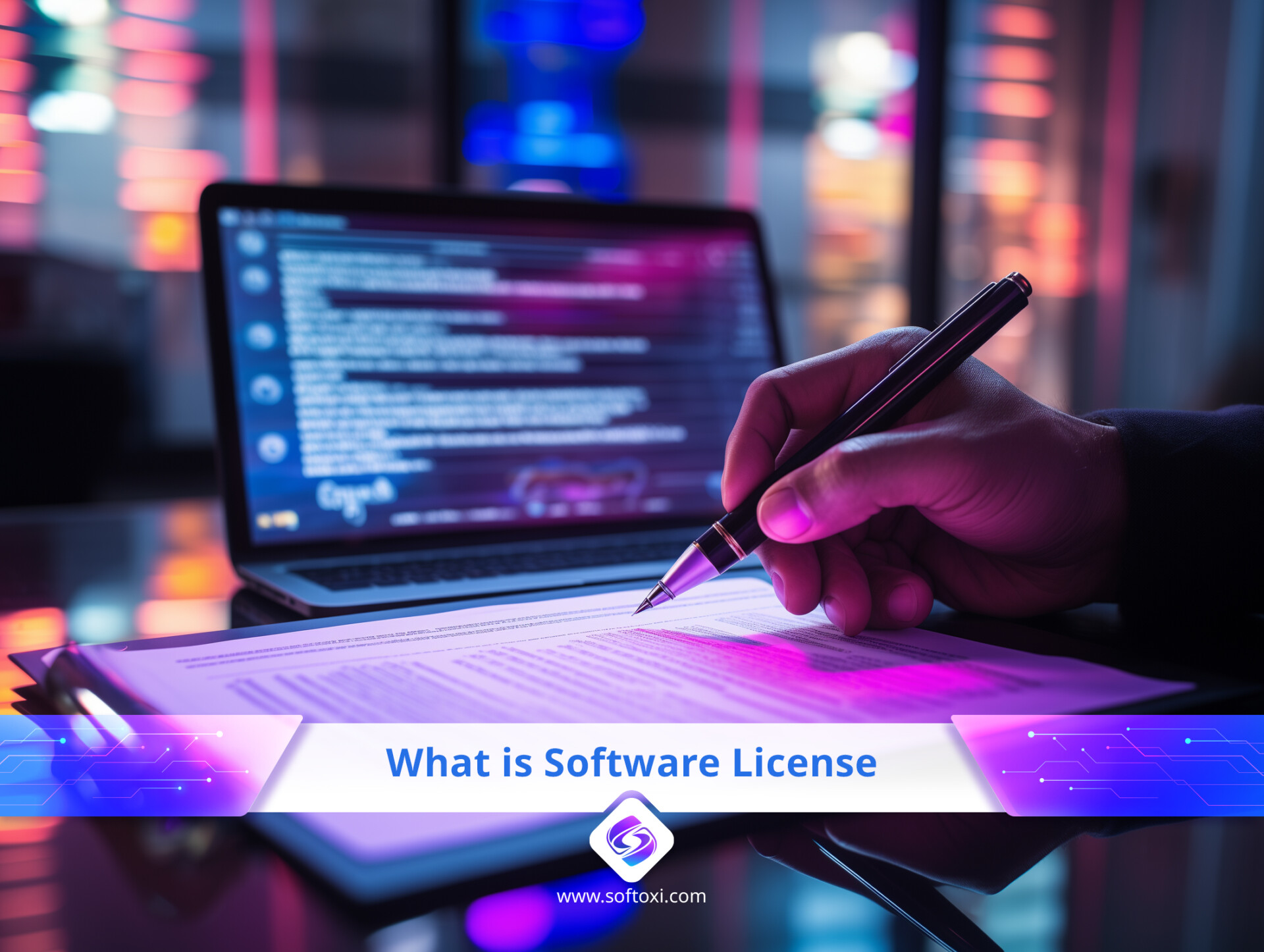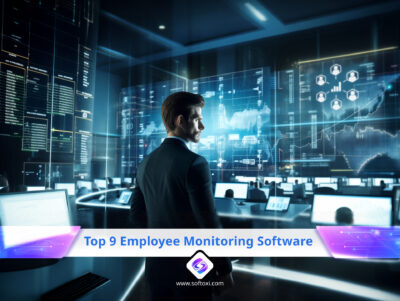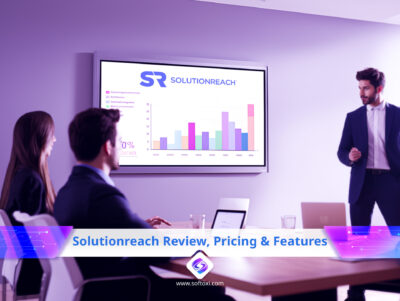Software licensing plays a big role in determining how developers can create their software applications and how users and businesses can implement them.
Before starting to develop your software or implementing a new application within your business, it’s a good idea to understand how software licensing works.
What Is Software Licensing?
Image: https://www.shutterstock.com/image-photo/handsome-smart-male-student-studying-university-2102457385
A software license is an agreement between the creator of the software and the end user. This legal text document exists to protect the intellectual property of the software developer and protect the developer against claims arising from its use.
Within a software license, you’ll find legally binding definitions for how users can distribute or use the software. Finally, you’ll find end-user rights within the license, such as warranties, liabilities, and installation.
For example, a software license may allow a user to download the application on a limited number of devices. Software licenses can also restrict the user from reverse-engineering the application to protect the developer’s intellectual property.
On the other hand, open-source licenses allow the user to collaborate or share the application to help improve it.
Why Are Software Licenses Important?
Both developers and users need to understand software licenses for a few reasons. For developers, software licenses give you legal protections.
For example, a software license may state that the developer isn’t legally responsible if certain negative consequences result from misusing the application.
The license can also protect the developer from having someone copy their work and release a similar product on the market.
Developers also rely on software licenses to define their business model. For instance, a developer may generate revenue from the product by selling the rights to use the software. Clearly defining the usage rights of the software helps the developer create a sustainable business model.
For users, knowing what’s included within a software license can help ensure you’re using the product correctly.
This is especially important for businesses, as you often need to implement software applications at scale. Users looking to implement software for their business must ensure the software license meets their needs before paying for the application.
How Are Software Licenses Used?
How the developer implements the software license depends on the deployment model. A deployment model is the strategy developers use to release and distribute the application.
For example, a developer may use on-premises deployment, where you install and use the software on local hardware. Another option is cloud-based deployment, where the developer hosts the software on remote servers and allows users to access it via the Internet.
Once the developer selects a deployment model, they can create a software license outlining the structure for how users can use the application.
For example, the developer may create a license in which the software goes on local hardware, but the user pays for each device on which they want to install it. Or they may create a subscription license, in which the user pays a recurring fee for access to the cloud server.
Which deployment model a developer selects depends on several factors. They will consider their business model and the following factors: scalability, accessibility, costs, and security.
For the user, it’s important to understand how the developer chooses to deploy the software to ensure it aligns with your needs.
What Are the Different Types of Software Licenses?
There are five software license types, which essentially govern how restrictive it is to use that software. Knowing the types of software licenses can help you select the right one for your situation. The types of software licenses are:
Public Domain License
A Public Domain License is the least restrictive of software licenses. With a Public Domain License, the software is free from copyright restrictions.
This means the creator has released all their copyright interests in the product, allowing anyone to use, modify, or distribute the work as they wish. Users can adopt the software with a Public Domain License to reduce costs, or they can work on the software to develop it further.
Popular examples of software using Public Domain Licenses include the web browser Firefox, the operating system LINUX, and the email application Thunderbird.
GNU LGPL
The GNU Lesser General Public License (LGPL) is an open-source software license designed to permit software libraries.
With the LGLP, developers can use available open-source libraries within their products, regardless of whether the application is open-source. By using existing software libraries, developers can significantly reduce the development time of the software, as they don’t need to start from scratch.
The purpose of the LGPL is to encourage users to implement open-source libraries while allowing developers to create applications with different licensing terms.
This makes it more popular for developers of software libraries who want them to become more widely adopted.
Permissive Software License
The next level is a permissive software license, an open-source license with a few restrictions. Permissive software licenses are characterized by their lenient terms compared to more restrictive licenses.
They allow developers to use existing software code in various contexts, including proprietary projects, without requiring the resulting work to be open source.
With many permissive software licenses, the developer can integrate the software as they wish, provided they include attribution to the original authors. A permissive software license may also include a warranty, protecting the original authors after another developer makes modifications.
Copyleft Software License
A copyleft software license is one in which a developer may create a modified or extended version of the software, provided that they also distribute the source code of the modified work.
The purpose of a copyleft software license is to ensure that subsequent versions and improvements to software remain open source.
The GNU General Public License (GPL) is the most well-known copyleft license. Under this license, when a developer uses or modifies software under the GPL, they must also release the source code of their derivative work under the same GPL terms.
This ensures the freedom of the GPL will continue under all subsequent versions.
Proprietary Software License
The most restrictive of software licenses is the proprietary software license. A proprietary software license is a legal agreement that grants users specific rights to use a software product.
Unlike open-source licenses, a proprietary software license keeps the source code confidential and limits user rights. Some restrictions within a proprietary software license may include modifying, distributing, or reverse-engineering the software.
The user will pay a licensing fee to use the software in many proprietary software licenses under these terms. Some examples of proprietary software licenses include Microsoft Office or the Adobe Creative Suite of products.
With these products, users pay to use the software but are not allowed to make any changes, nor is the source code available.
What Is a Software License Agreement?
The software license agreement is the legal document that stipulates the conditions between the developer and the user.
Essentially, it provides detailed ground rules for the use of the software. Some key elements of the software license agreement may include the following:
- How the user can use the software
- Where the user can install the software
- How many times the user can install the software
- The duration of the software license agreement
- Any copyrights that apply to the software
- Whether the user can modify, copy, or redistribute the software
Typically, the developer will require the user to accept the terms outlined in the software license agreement before accessing the software.
How to Manage Your Software Licenses
Some developers and users may have multiple software licenses to manage various applications. Developers and users can implement a software license management tool to ensure ongoing compliance with the software license agreements.
This tool will keep track of your different licenses, their effective dates, and any compliance issues. For example, a business can use a software license management tool to track its open-source licenses across projects.
Find the Right Software License for Your Needs
Whether you’re an individual user, a business, or a developer, finding the right software license for your needs is important. Before you decide which software application you want to use, you should learn about its licensing to ensure it fits your needs.
At the same time, if you’re a developer, you should learn about the licenses of any libraries you’re using and research which licensing structure best fits how you want to release your product.
By carefully researching the available software licenses, you can remain legally compliant, whether using someone else’s software or releasing your own.




